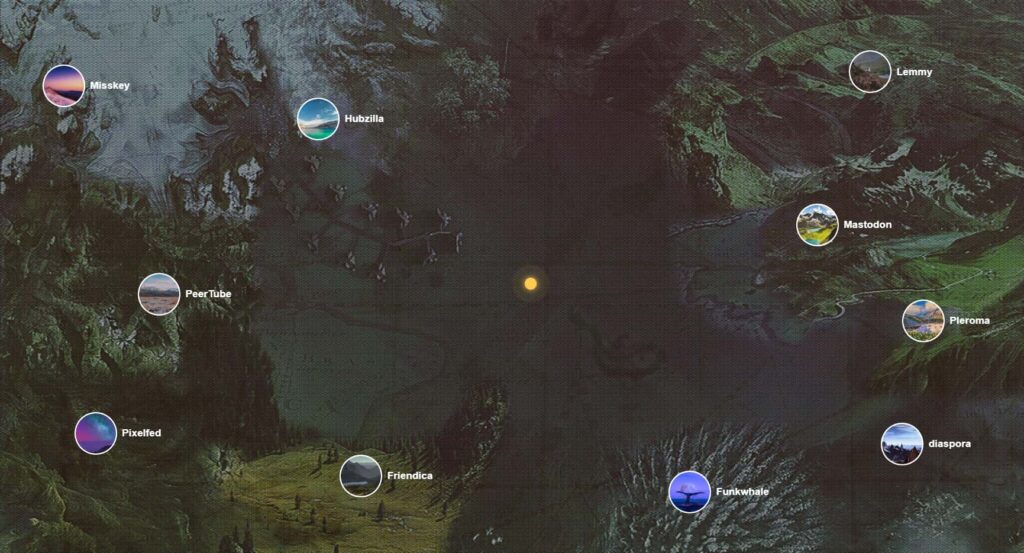We live in an era where social media is being ruled by Facebook, Instagram, TikTok and Twitter (X), but a new concept has emerged that challenges the traditional centralized models. It is called Fediverse.
Fediverse short for “Federated Social Networking,” is a decentralized network of social platforms that enables users to interact and share content across different platforms. In this article, we will look into what Fediverse has to offer, its pros and cons, the platforms included, and the role of decentralization in this innovative ecosystem.
What is Fediverse?
Fediverse is a decentralized network of social platforms that allows users to share content, communicate, and collaborate across different platforms. Unlike traditional social media networks, Fediverse is not controlled by a single entity, but rather, it is a federation of independent platforms that adhere to a common set of protocols and standards. This federation enables users to seamlessly interact with each other, regardless of the platform they are using.
The Fediverse is built on a foundation of open-source protocols, such as ActivityPub, OStatus, and XMPP, which facilitate interoperability and communication between different platforms. These protocols allow users to create and join groups, share content, and engage in discussions, all while maintaining their privacy and control over their data.
Pros and Cons of Fediverse:
Fediverse offers several advantages over traditional social media networks:
- Decentralization: The decentralized nature of Fediverse ensures that users have control over their data and privacy, as there is no central authority to monitor or manipulate their information.
- Interoperability: Users can easily interact with people and content across different platforms, breaking down the barriers that often exist between different social networks.
- Open-source: The open-source nature of Fediverse allows for constant innovation and improvement, as developers can modify and enhance the protocols to better serve the community.
- Freedom of choice: Users can choose the platforms they prefer to use, without being locked into a single service provider.
However, Fediverse also has some drawbacks:
- Fragmentation: The existence of multiple platforms and protocols can lead to fragmentation, making it challenging for users to find and connect with others across different networks.
- Limited reach: Since Fediverse is not as widely adopted as traditional social media networks, it may be more challenging for users to find a large audience for their content.
- Learning curve: The decentralized nature of Fediverse can be overwhelming for new users, as they must navigate multiple platforms and protocols to fully engage with the community.
- Moderation Challenges: Decentralization can make content moderation more difficult, as there is no centralized authority to enforce community guidelines and standards.
Platforms Included in Fediverse:
Fediverse comprises a wide range of social platforms, including:
- Mastodon: A popular microblogging platform that follows the ActivityPub protocol.
- PeerTube: A video-sharing platform built on the ActivityPub protocol.
- Pleroma: A decentralized social network that supports various content types, including text, images, and videos.
- Friendica: A community-driven social network that offers a range of features, such as groups, events, and profiles.
- Hubzilla: A platform that supports multiple types of content, including blogs, forums, and social networking.
- GNU Social: A social networking platform that follows the ActivityPub protocol and is built on the GNU Social software.
- Pixelfed: A photo-sharing platform that resembles Instagram, with a focus on user privacy and control over content.
- WriteFreely: A minimalist blogging platform that supports long-form content and encourages thoughtful discussions.
- Funkwhale: An open-source, self-hosted music streaming service that allows users to share and listen to their music collections online.
- Diaspora: A decentralized social network that allows users to connect and share content across independently operated servers, promoting privacy and user control.
- Lemmy: A decentralized, open-source social link aggregation and discussion platform, similar to Reddit.

Role of Decentralization in Fediverse:
Decentralization is a fundamental aspect of Fediverse, as it empowers users to have control over their data and privacy. By distributing the network’s infrastructure across multiple platforms, Fediverse ensures that no single entity has complete control over the data or the network.
This decentralized approach also promotes innovation and collaboration, as developers can freely modify and improve the protocols to better serve the community. Additionally, decentralization also ensures that the Fediverse remains resilient to censorship, data breaches, and other threats that centralized platforms face.
Conclusion:
Fediverse is an exciting concept that challenges the traditional centralized models of social media. By embracing decentralization, Fediverse empowers users to take control of their data and privacy, while also encouraging a sense of community and collaboration across various platforms.
While it may have some drawbacks, such as fragmentation and limited reach, Fediverse offers a unique and promising alternative to traditional social media networks. As the concept continues to grow, it is likely to play an important role in shaping the future of social networking.







